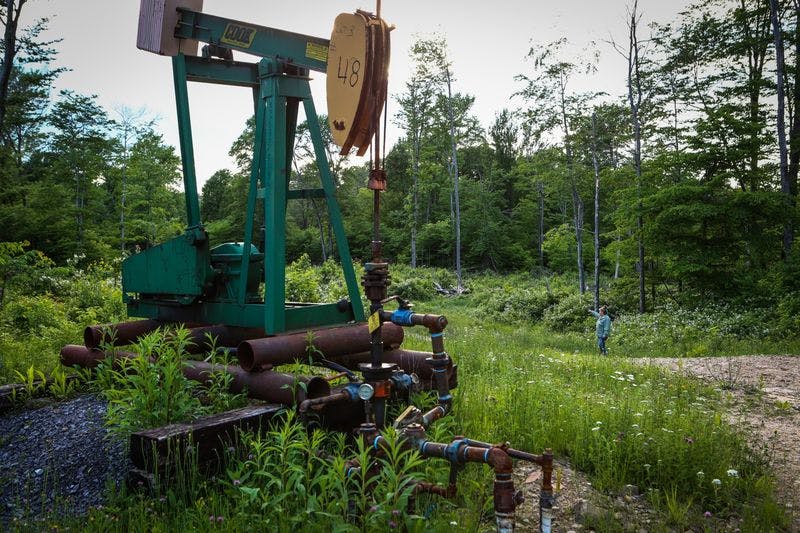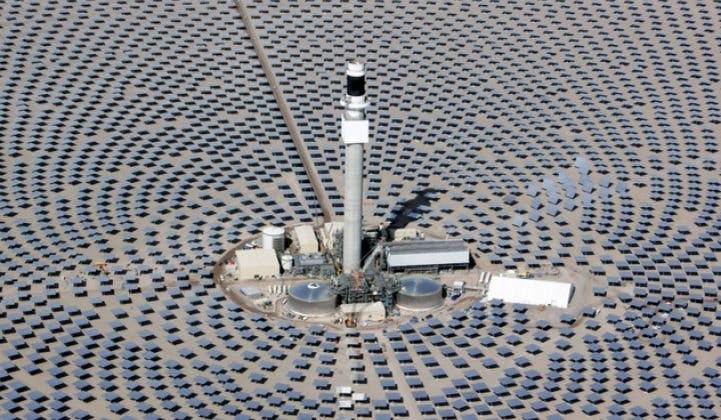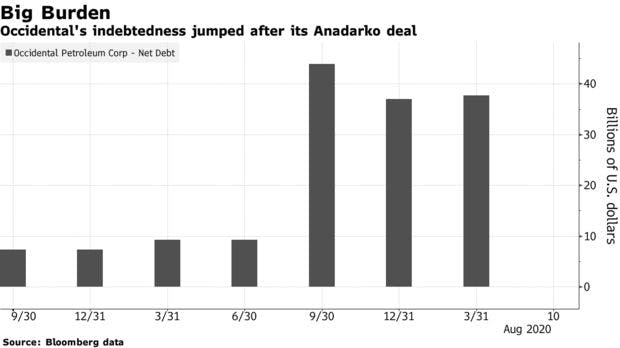 Bloomberg Green
Bloomberg Green
‘Stranded Assets’ Risk Rising With Climate Action and $40 Oil
When you see a half-constructed building that’s been abandoned, it’s a sign the project no longer made economic sense. There’s an argument that trillions of dollars’ worth of investments to tap new supplies of oil and gas might suffer the same fate, leaving deposits of oil in the ground and turning them into what are known as “stranded assets.” What had seemed like an abstract debate has been made very real by the sharp drop in oil prices in 2020, leading some major companies to shift plans away from fields where drilling is costlier or whose deposits are more carbon intensive.
Some analysts and investors are warning energy companies that there’s a real risk the value of their projects to develop new fields or deep-water wells could fall to zero - if governments make good on pledges to cut greenhouse-gas emissions. They argue that it’s time financial markets consider the economic risks of climate change and factor in the possibility of tough restrictions coming into effect. The hit to the world economy from the coronavirus pandemic isn’t helping, and neither is oil price volatility.
Read more Greentech Media
Greentech Media
Lessons From 2009 for a Green Stimulus Today
A clean-energy company funded through a Department of Energy loan recently filed for bankruptcy.
Tonopah Solar Energy, the builder of a 110-megawatt concentrated solar power site, joined the ranks of bankrupt Solyndra and Abound Solar. Those companies all received money through the 2009 American Recovery and Reinvestment Act (ARRA), which set out $90 billion for clean energy at the depth of that recession.
Despite such failures, DOE loan guarantee programs for new energy technologies — enacted during the George W. Bush administration — have been a success overall. The DOE has disbursed nearly $30 billion to new and emerging technologies, with overall portfolio losses around just 2.7 percent, which is better than that achieved by most major banks. So far, the government has already received $3.15 billion in interest payments, with less than $1 billion in actual and estimated losses.
Read more Bloomberg
Bloomberg
Occidental Posts $6.6 Billion Charge After Oil Price Crash
Occidental Petroleum Corp. reported a $6.6 billion writedown in the second quarter, equivalent to more than 40% of its market value, as the collapse in energy prices took its toll on the debt-laden U.S. shale oil producer.
More than two-thirds of the impairment was to account for the lower value of its domestic onshore acreage, with the remainder in the Gulf of Mexico and overseas, the Houston-based company said Monday in a statement. The shares plunged as much 6.8% in after-market trading in New York.
Read more E&E News
E&E News
Watchdogs slam federal pandemic loan program
Members of a congressional oversight commission criticized a top Federal Reserve official last week for the slow pace at which the central bank is distributing pandemic-related loans, as well as whether it went out of its way to help oil and gas companies.
At issue was an initiative called the Main Street Lending Program, which was announced in March with the goal of helping small and midsize businesses find financing amid the coronavirus crisis.
The program became operational in July with a $600 billion loan capacity. But so far, it's issued less than $200 million in lending.
Read more Bloomberg Opinion
Bloomberg Opinion
OPINION: Saudi Arabia Turns Off America’s Oil Taps Again
For the second time in three years, Saudi Arabia is slashing the volume of crude it’s sending to America in an attempt to force down stockpiles in the world’s most visible oil market and thereby hasten the rebalancing of supply and demand.
Weekly U.S. oil inventory data — usually published on a Wednesday and covering the period up to the previous Friday — is routinely pored over by oil analysts and traders alike. Despite their shortcomings, the figures give the most up-to-date picture of changes in the oil balance and influence trading decisions and crude prices around the world.
Read more